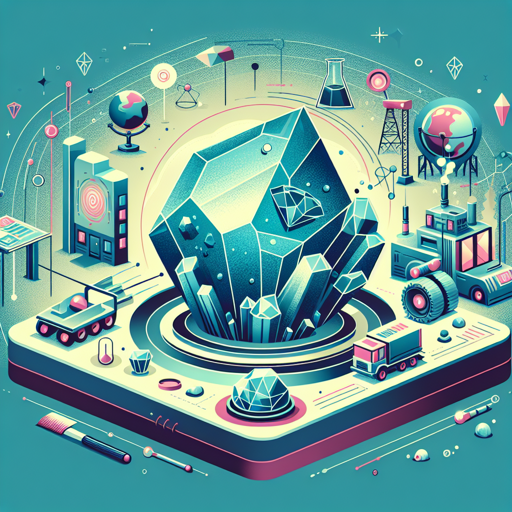Crystals in Technology: The Hidden Gems
Unveiling the significant role of minerals in powering the technology that shapes our modern world.

Introduction
In the hustle and bustle of the digital age, it’s easy to forget that the high-tech devices we use daily have their roots in the very earth beneath our feet. The minerals that form in nature play a crucial role in driving the technology that shapes our modern world. This article explores how minerals, particularly quartz and silicon, have become the hidden gems in our technological devices.
How Crystals Power Our Watches: The Role of Quartz
Quartz, a common mineral found in the Earth’s crust, is a vital component in watches and clocks. Quartz crystals have a unique property: they oscillate at a precise frequency when an electric charge is applied. This property, known as piezoelectricity, is what makes quartz invaluable in timekeeping.
In a quartz watch, the battery sends an electric current to the quartz crystal, causing it to vibrate precisely 32,768 times per second. These vibrations are measured by a circuit, which converts them into a regular electric pulse that moves the watch’s hands or changes the digits on a digital display.
Silicon: The Heart of Modern Electronics
Silicon, another abundant mineral in the Earth’s crust, is the backbone of modern electronics. Silicon is a semiconductor, meaning it can either conduct or insulate electricity. This property allows it to control electrical current in devices, making it essential in computer chips and transistors.
In a silicon chip, layers of silicon, other elements, and compounds are arranged in complex patterns to create circuits. These circuits manipulate electrical current to perform calculations, store information, or control a device.
As technology evolves, silicon’s role has expanded beyond computers. It’s now used in solar panels, LCD screens, and even the automotive industry.
| Crystal | Use in Technology | Why It’s Used |
|---|---|---|
| Quartz | Watches, clocks | Piezoelectricity allows precise timekeeping |
| Silicon | Computer chips, transistors, solar panels, LCD screens | Semiconductor properties allow control of electrical current |
“The poetry of the earth is never dead.” - John Keats
While Keats may not have had technology in mind when he penned this line, it aptly captures the essence of how the earth—through its minerals—continues to contribute to the rhythm of our lives in unexpected ways.
External Resources
For those interested in diving deeper into the world of minerals and their role in technology, the U.S. Geological Survey’s Mineral Resources Program offers a wealth of information.
Conclusion
From the quartz ticking in our watches to the silicon powering our computers, minerals have become an integral part of modern technology. As we continue to innovate and push the boundaries of what is possible, these hidden gems of the earth will undoubtedly continue to play a pivotal role in shaping our technological landscape. The next time you glance at your watch or scroll through your phone, remember the silent, steady beat of the earth that makes it all possible.